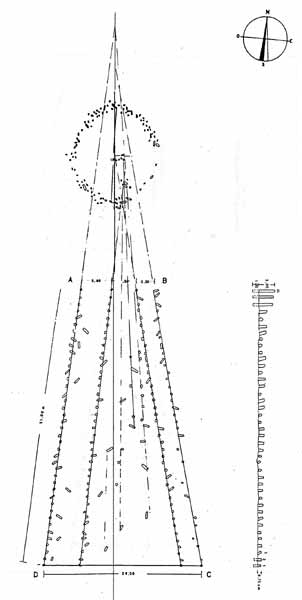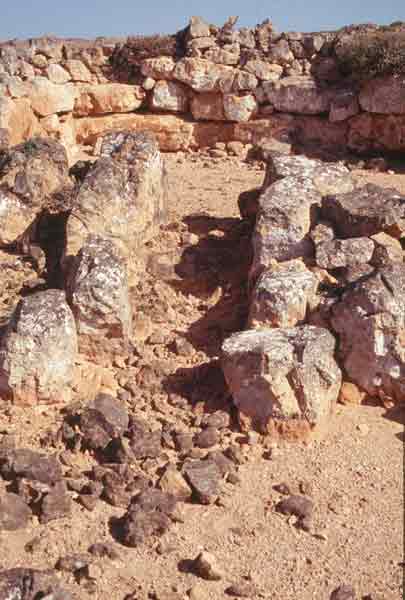The Archaeology Fund
Ring of Naharit
|
The Bronze Age of Southern Arabia (2500-1100 B.C.) has been one of the latest problems to be addressed by archaeologists. As recently as 1980, no one had demonstrated its presence in Yemen or Southern Oman. A. DeMaigret's work in highland western Yemen produced the first proof of such a period, consisting of modest settlements scattered over the countryside. Since those finds, we have recovered settlements along the Indian Ocean, Red Sea, interior Yemen and coastal/inland Oman [BA-009]. In addition, tumuli in various localities have bee reported as well as large scale pillars [Wadi Jouf.tif] and stone alignments [BA-036, BA-037]. Artifacts from the period include ceramic vessels, lithic tools, various types of beads from burials, and copper/bronze implements. Specific rock art themes can also be attributed to this period [BA-006]. In Dhofar to date, we have recovered similar large slabs in front of tombs but without the engraved portraiture. This brings us to Bronze Age "rings" found in both Dhofar and Mahra. The best example comes from a remote valley in Mahra called Naharit [35 jpg and 38jpg]. First reported in 1955, it has yet to be examined in detail. A series of very large stones marks the border alternating with entryways and smaller outside stone rows. No settlement can be found near-by. What were the reasons for building this distinctive ring in such a location? What did Bronze Age people do with such rings? (Think of the rings and stone alignments of Bronze Age Europe). How would you excavate such a site and what keys of alignment would you look for? Our research has suggested that our sites from Southern Arabia may be associated with a larger Bronze Age culture spanning the entire western part of Arabia and beyond. This supposition is based on several key points: 1) The ability of Bronze Age people to build structures using very large stones [BA-031], 2) the emphasis on large stones and pillars set in rows, lines, and circles,[BA-064, BA-085] and 3) the prominent appearance of rock art and slabs depicting humans associated with ritual appearance, dress, and specific dagger/sword types [BA-011, BA-055]. In the Mahra Governate, we found a large number of rock art sites inscribed with Bronze Age symbols (suns, orbs, daggers)[ BA-054, jpg.33] and grave fields with statue-menhirs. In these cases, the Bronze Age people placed prominent people in large tombs using megalithic stones. These large slabs were often centered on one stone which was marked with a person's portrait. In every case, the large head, arms and torso of the person were shown with a lunate pommel dagger, known to be datable to the third/second millennia B.C. [BA-055, BA-059, BA-112]. In Dhofar to date, we have recovered similar large slabs in front of tombs but without the engraved portraiture. This brings us to Bronze Age "rings" found in both Dhofar and Mahra. The best example comes from a remote valley in Mahra called Naharit [35 jpg and 38jpg]. First reported in 1955, it has yet to be examined in detail. A series of very large stones marks the border alternating with entryways and smaller outside stone rows. No settlement can be found near-by. What were the reasons for building this distinctive ring in such a location? What did Bronze Age people do with such rings? (Think of the rings and stone alignments of Bronze Age Europe). How would you excavate such a site and what keys of alignment would you look for? |
|






